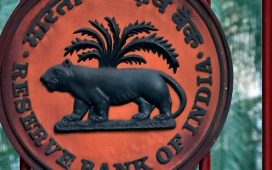
This is driven by the fact that daily household inflation is yet to sober down completely impacting consumption amongst masses or people with low-to-mid income levels. Overall consumption in small towns and rural areas is impacted for 6-8 quarters now due to inflation though the rich in these markets are buying, that too premium products.
Cash is replacing jewellery and electronic products as wedding gifts – a trend which has gained pace this year, which industry executives attributed to urbanisation of rural lifestyle.
“Sales of appliances have dropped to 2020 levels post Diwali with no uptake during the marriage season,” said Godrej Appliances business head Kamal Nandi.
“People are moving out of gifting appliances in marriages and instead giving cash to the newly wed. We had expected the sales momentum to continue after Diwali due to so many weddings and a recovery in rural spending and entry-level products, but it did not,” he said.
The wedding season usually gives a bump up in sales for products like refrigerators, washing machines, televisions and mixer grinders post Diwali and continues till February.Similarly, for jewelers, the October-December and January-March quarters contribute 60% of their annual sales due to Dhanteras and wedding season. Gold prices have climbed by 5% since Dhanteras-Diwali and are now at Rs 62,775 per 10 gm, whereby jewelers said small gold jewellery gifts like earrings and pendants have been replaced by cash.Even those marrying are replacing heavy wedding jewelry with light weight jewellery. A softer dollar and expectation of a pause in the Federal Reserve’s monetary tightening are driving the gold prices northwards.
Vaibhav Saraf, director of Aisshpra Gems & Jewels, which has 11 stores in small towns of Uttar Pradesh, said higher gold prices would mean lesser weight being sold but the investment amount remains the same.
“However, due to the increase in prices, sales of smaller items like rings, and earrings used for gifting have gone down and people are now preferring to give silver coins or cash,” said Saraf who has stores in Gorakhpur, Deoria, Basti, Azamgarh and Ayodhya.
Rural India accounts for 60% of the country’s annual gold consumption, which has been pegged at 700-750 tonnes this year by the World Gold Council – marginally lower than last year’s demand of 774 tonnes.
Nitin Khandelwal, owner of Akola-based Khandelwal Jewellers, said demand is almost down by 30-40% since Diwali. “Price is the biggest factor for such a lull in the market,” he said.
Leading electronics retail chain Vijay Sales director Nilesh Gupta said the spike in demand for appliances due to weddings is gone with the dowry system almost over, urbanization of gifting behavior, more number of love marriages and both couples working.
There are projections that some 38 lakh weddings will be solemnized this year with 12 wedding dates in the third quarter and about 29 dates in the fourth quarter.
Consumer goods companies have projected a recovery in consumption in the second half of the fiscal year, including rural markets, driven by deflation, increased rural spending by the government ahead of general elections, and weddings.
Vedant Modi, chief revenue officer at Vedant Fashions, which owns wedding fashion chains like Manyavar and Mohey, recently told analysts that there is definitely some level of tailwinds from a wedding date and number of wedding perspectives.
Titan Company CEO (jewellery division) Ajoy Chawla too recently said in its earnings call that if the gold price remains where it is or if it comes down marginally, many customers who’ve been holding back will jump in including wedding purchasers who are waiting for gold prices to stabilize.










